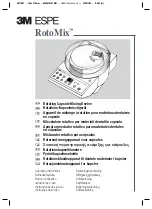
4
the standard solution (make sure the standard is fresh and clean). If the reading is
greater than 2.8 EC or smaller than 2.7 EC, then it’s time to calibrate again.
3.4
If the calibration fails, the screen will turn red. For details, see
Section 11 Troubleshooting Guide.
4
EC/500ppm/700ppm Measurement
4.1
Power on and remove the probe cap.
4.2
Rinse the probe with clean water and shake off excess water.
4.3
Submerge the probe into the solution, make a quick stir to remove
potential air bubbles around the sensor. Hold still and wait for the
reading to stabilize (
stays on the screen), then record the
reading.
4.4
Short press
to switch from EC → 500ppm → 700ppm
4.5
Thoroughly rinse off the probe with clean water.
What is EC and its relation to 500ppm & 700ppm?
EC (electrical conductivity) is a measure of the nutrients in the solution. Low conductivity
implies a low nutrient concentration, which usually results in nutritional deficiencies and slow
growth rates of your plants.
A higher conductivity is more food for your plants. However, be careful of very high levels as
delicate plants, cuttings, and seedlings can experience fertilizer burn if the conductivity is
excessively high.
EC, 500ppm, and 700ppm are simply different units preferred by different markets. 500ppm
and 700ppm both originate from EC. Therefore, using EC to compare and analyze test result
is the safest way and will minimize confusion. Here is how they convert to each other:
1.0 (EC) = 500ppm (500ppm) = 700ppm (700ppm)
2.6 (EC) = 1300ppm (500ppm) = 1820ppm (700ppm)
3.5 (EC) = 1750ppm (500ppm) = 2450ppm (700ppm)
5
Other Functions
5.1
If necessary, you can manually hold (lock) the reading by short pressing
. Press it
again to cancel the hold.
5.2
Long press
to switch temp. unit between °F and °C.






























